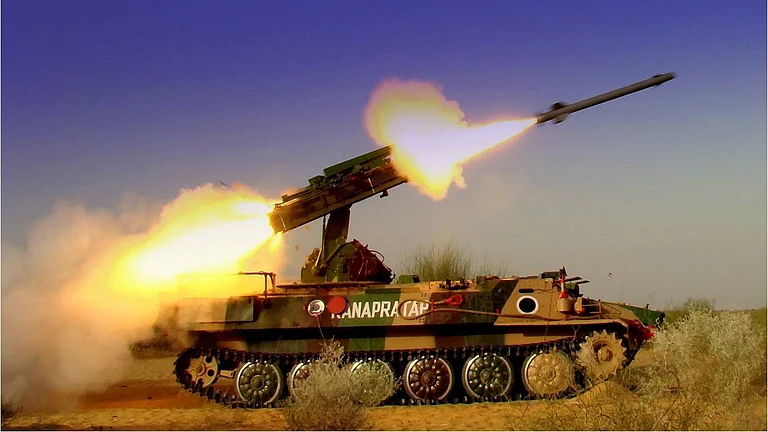India has successfully tested its indigenous low-cost counter-drone system in hard kill mode, Bhargavastra, in Odisha's Gopalpur on Tuesday, ANI reported. The test comes shortly after India's decisive military action, Operation Sindoor.
This anti-drone system is designed and developed by Solar Defence and Aerospace Limited (SDAL), the system is designed to neutralise hostile drone swarms, enhancing India’s preparedness in modern aerial warfare.
What is Bhargavastra?
Bhargavastra is India’s first indigenous micro-missile system, developed by Economic Explosives Limited (EEL). This system employs guided micro-munitions capable of destroying small and incoming drones within 2.5 km range.
It has two layers of defence: one uses unguided micro rockets to hit groups of drones with a blast radius of 20 meters, and the second uses guided micro-missiles for more precise targeting. These systems make it suitable for high-altitude areas and rough terrain.
Bhargavastra's modular and flexible design also makes it stand out among others. The system can be customised with radars, electro-optical sensors and jamming tools depending on where and how it's deployed. It integrates seamlessly into the military’s existing communication and control systems.
Most importantly, the anti-drone system's radar can spot threats from up to 10 km away, and it provides real-time situational awareness to the operator.
According to the report, in its recent testing the system successfully executed single and salvo-mode launches, meeting all performance benchmarks.
Its developers told the news agency that the system represents a significant stride in counter-drone technology. They said, while many countries are working on similar technologies, Bhargavastra’s blend of simplicity, affordability, and layered defence makes it unique, giving India’s Make in India a new push and adding strength to the country's air defence.
India-Pakistan Tensions
The test follows a period of heightened military tension between India and Pakistan following the Pahalgam terror attack. After Indian armed forces targeted Pakistan and Pakistan-occupied-Kashmir-based nine terror camps, Islamabad escalated by launching multiple drones and missiles against multiple locations in Jammu and Kashmir and border areas.
Pakistan carried out these attacks using equipment sourced from Turkey and China. However, India successfully intercepted those missiles and drones by developing a comprehensive arsenal including the S-400 Triumf, Barak-8, Akash and Spyder systems.
In this context, the successful trial of the homegrown Bhargavastra system marks a significant milestone in strengthening India’s aerial defence capabilities against evolving threats.
































